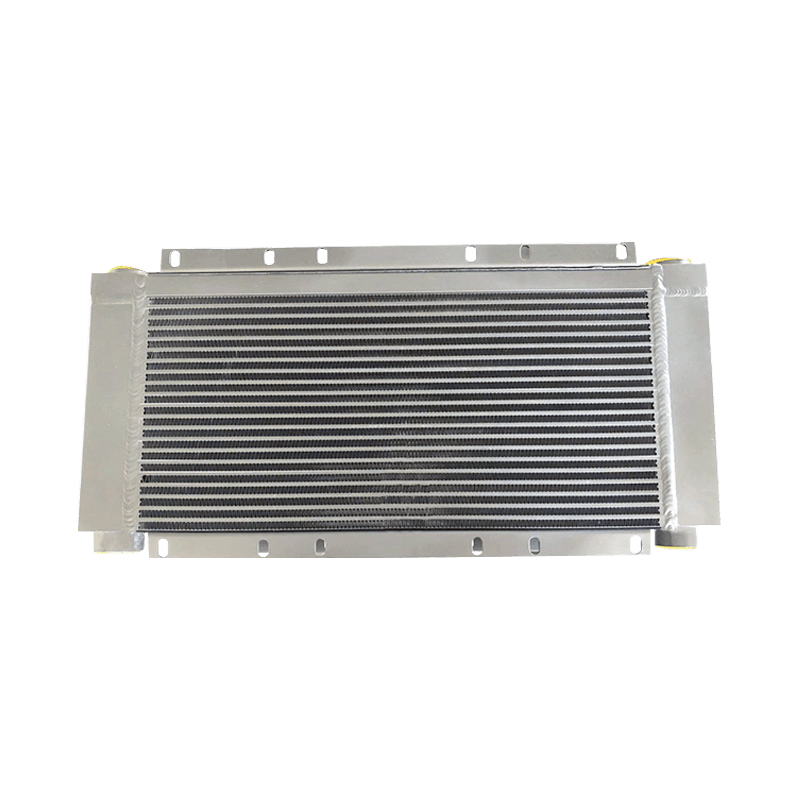 +86-13812067828
+86-13812067828
The compact and lightweight nature of aluminum plate-fin heat exchangers plays a significant role in contributing to energy savings across various industrial applications. Here's how these characteristics lead to improved energy efficiency:
1. Reduced Energy Consumption in Transport and Installation
One of the key benefits of the compact and lightweight design is that it reduces the overall weight and volume of the heat exchanger system. In applications like aerospace, automotive, or mobile machinery, where every kilogram counts, a lighter heat exchanger reduces the overall weight of the system. This translates into lower fuel consumption and energy savings, particularly for vehicles or machinery that rely on power for movement or operation. The lighter weight also makes it easier and faster to transport, lowering associated logistics and installation costs.
Additionally, the smaller footprint of a compact heat exchanger allows for more efficient integration into tight spaces, meaning the system can be designed and installed with fewer restrictions, leading to optimized performance from the very start. This can save energy by ensuring the heat exchanger fits into the overall system without unnecessary complications that could cause inefficiencies.
2. Improved Thermal Efficiency
The compact design of aluminum plate-fin heat exchangers is directly linked to their ability to maximize heat transfer efficiency. The higher surface area-to-volume ratio in a compact heat exchanger increases the efficiency of heat exchange in a smaller space. This means the system can cool or heat fluids more effectively, requiring less time to achieve the desired thermal state.
When heat exchangers operate more efficiently, less energy is required to maintain temperature levels in the system. For instance, in air conditioning or refrigeration applications, a more efficient heat exchanger can remove heat from a fluid more rapidly, reducing the need for prolonged cooling cycles and ultimately lowering energy consumption. The overall result is reduced energy usage and, consequently, energy savings.

3. Reduced Pressure Drop and Lower Pumping Costs
Due to their compact nature, aluminum plate-fin heat exchangers typically have lower pressure drops across the system compared to larger, traditional designs. A lower pressure drop means the fluid requires less energy to be pumped through the heat exchanger. This is particularly important in systems where fluid pumps consume a significant amount of power.
In traditional heat exchangers, larger sizes and longer flow paths can result in higher pressure drops, requiring more energy to maintain the desired flow rates. The more compact design of the aluminum plate-fin heat exchanger helps reduce this loss in pressure, ensuring that the pumping energy required is minimized. As a result, the entire system becomes more energy-efficient and operates with lower operational costs.
4. Faster Heat Exchange Response Times
A compact and lightweight aluminum plate-fin heat exchanger allows for faster heat exchange responses. With an optimized design and reduced thermal mass, the heat exchanger reaches the desired temperature more quickly and efficiently. This rapid response time is especially beneficial in dynamic systems that experience fluctuating heat loads or variable flow conditions.
In industrial applications, such as in HVAC systems or machinery cooling, where maintaining consistent temperature control is crucial, quicker heat exchange minimizes the need for excess energy use to maintain set temperature levels. Faster temperature regulation also means that the system doesn't need to run as long or work as hard, thus saving energy.
5. Lower Maintenance Costs and Increased System Longevity
A more compact and lightweight aluminum plate-fin heat exchanger is also easier to maintain due to its accessible and simplified design. Systems with lower maintenance demands typically operate more efficiently over time. If a heat exchanger becomes fouled or clogged with debris, it can significantly reduce the heat transfer efficiency, forcing the system to consume more energy to achieve the desired cooling or heating.
The ability of aluminum plate-fin heat exchangers to resist fouling, corrosion, and wear reduces maintenance downtime and keeps the system running at peak efficiency. With fewer maintenance needs and longer operational life, the energy consumption remains lower over the lifespan of the equipment.
6. Optimized Heat Recovery Systems
In systems designed for heat recovery or waste heat recovery, a compact and lightweight heat exchanger is key to ensuring that waste heat can be captured and reused efficiently. By effectively utilizing waste heat, these systems reduce the need to generate additional heat through energy-intensive methods, such as burning fuel or using electrical heating elements. The compact design ensures that waste heat can be recovered without taking up excessive space or adding unnecessary weight to the system, further contributing to overall energy savings.